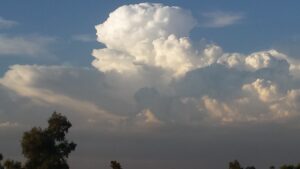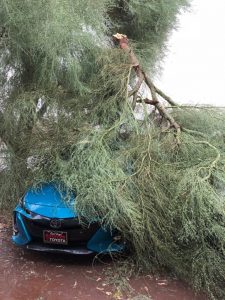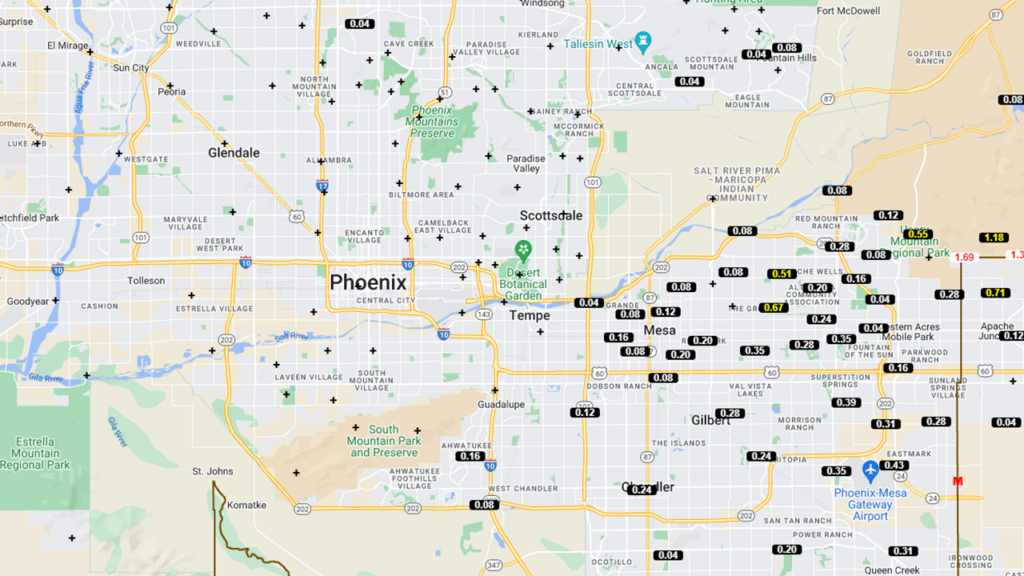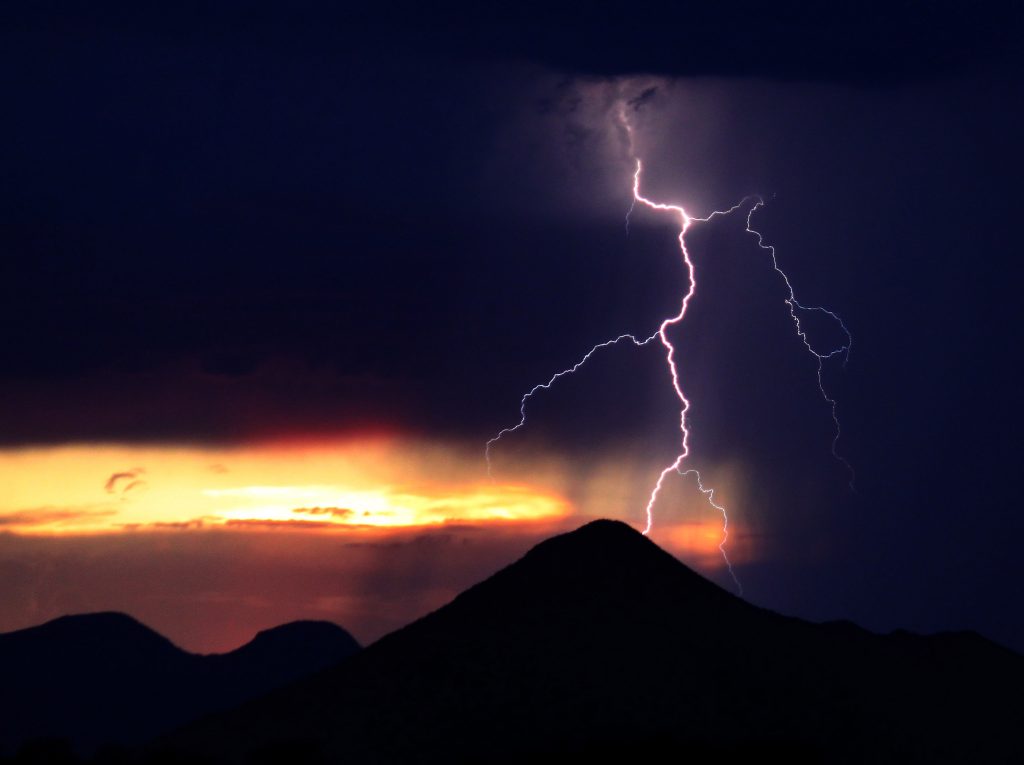Monsoon Season in Arizona
It’s July 25th in Mesa, and we are feeling hopeful with the prediction of having a whopping 40% chance of storms.

In Arizona, the monsoon season officially runs from June 15 to September 30. Most summer storms don’t move in until July. So far in 2024, when consulting the experts, we’ve heard ‘drier than normal’ and ‘less active’ (and that is what we seem to be experiencing). We have one more adjective to share when it comes to our monsoons: Hit or miss! One area of the Valley may get ample rainfall, while another is left in the dust.
A typical ‘monsoon season’ brings 2-3 inches of rain as part of our annual total of 7-8 inches. But the monsoon generates more than just rain. As many of us have experienced, these storms can bring damaging wind, lightning, localized flash flooding, and dust storms.
Sure enough, by evening, the wind has picked up, the trees are swaying to the rhythm of the wind like dance performers, and flashes of lightning illuminate the dark sky. Switching on the local news, we see reporters hyping the breaking news of terrible wind damage at a home in Buckeye. Is it going to rain?
Prepare Your Home and Landscape

Before a monsoon hits, be sure to prepare your home and landscape. Lower the shade umbrellas, make sure other objects in your yard are well secured – you know the drill… batten down the hatches.
Regarding your landscape, let’s be realistic. we’ve seen trees and other plants heavily damaged or even snapped off at the ground from microbursts and strong winds. There’s nothing that can be done if they are hit with so much force. However, as they say, the best defense is a good offense. Keep your plants and trees healthy and follow these guidelines:
-
- Water deeply but infrequently to establish a strong root system.
- Don’t over-fertilize or overwater as it can cause excessive top growth.
- Leave lower branches on trees and shrubs so the wind blows OVER them … not under their canopy. In other words, don’t prune your trees to look like umbrellas.
- Thinning of trees is often recommended by well-meaning professionals. However, it is stressful for your trees and is often overdone. Trees respond with a new flush of growth that may be weakly attached, requires the use of more water, and causes more wind resistance.
Prepare yourself and your home for lightning strikes, power outages, tree damage, and street flooding. For example, in Mesa we have a page for sandbags and storm preparation that includes emergency numbers. Check with your local city for something similar. Have the information handy so that an outage doesn’t impact your accessing them.
How Much Rainfall Did You Get?
Turns out we did get rain, though not very much (see the map below).
It’s best if you have your own rain gauge to measure the rainfall in your landscape (remember how the storms are localized). If you don’t have a rain gauge, there are two sites you can use that will give you an idea. You can see what your neighborhood weather watchers are recording at www.rainlog.org. You can also find excellent information at the Flood Control District of Maricopa County rainfall data maps.

Turn off irrigation if at least ½” of rain

Turn off your controller or irrigation timer if you get ½” of rain or more and skip one irrigation cycle. If you don’t have a ‘smart’ controller with a rain sensor, you can use the ‘off’ ‘stop’ or ‘rain’ setting on the controller to stop the watering cycle without disturbing your programs. It will help you save water and money on your water bill.
Keep an eye on your landscape to determine when you need to turn the controller back on. You can skip at least one, maybe two (if you get more than a half inch of rain), irrigation cycles. For example, if you water your shrubs every 14 days, turn it back on after 14-20 days or more.
Take advantage of free water with rainwater harvesting!
One inch of rain off a rooftop of a 1,500 square foot home can collect about 900 gallons of water! Add 3,000 square feet of landscape (a typical front and back yard) and you can collect another 1,800 gallons. That’s why it pays to look into rainwater harvesting techniques to keep this beneficial resource on your property. To learn more about how to direct rainwater to your plants but not the street, visit our rainwater harvesting page.
 Monsoon Melodies Play List: We at Water – Use It Wisely can’t help ourselves. Rain and monsoons are music to our ears! That’s why we have curated a special playlist of Monsoon ‘rain songs’ on Spotify. Check it out!
Monsoon Melodies Play List: We at Water – Use It Wisely can’t help ourselves. Rain and monsoons are music to our ears! That’s why we have curated a special playlist of Monsoon ‘rain songs’ on Spotify. Check it out!
We also think you will enjoy these pages and blogs:
- Help Track Rainfall with Rainlog.org and Make a Difference
- Why Pay for Water When It’s Free? All about rainwater harvesting.
- Top 5 Reasons to Collect Rainwater for Your Landscape
- Prepare for Monsoon Season with These 5 Landscape Tips
Donna DiFrancesco is a horticulturist and Conservation Coordinator with the City of Mesa, AZ, one of nineteen Water – Use It Wisely partners to offer water-saving advice and programs.



